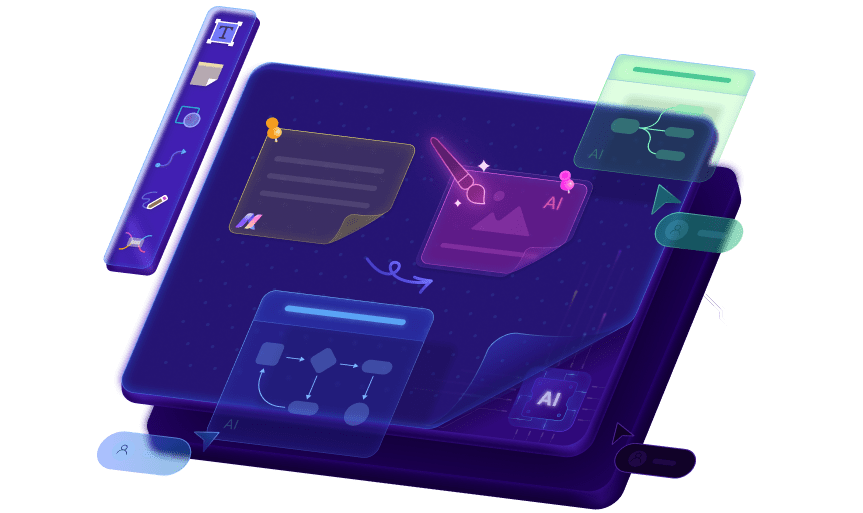
Open-source tools are a blessing for anyone wanting to work without paying hefty money. Today, researchers and developers prefer open-source platforms for data analysis, content management, and database management, ensuring transparency.
But with many options, how do you choose what’s best for your needs? You are not alone in this confusion. After trying and testing multiple platforms, here are my top 5 open-source AI platforms and alternatives that truly deliver. So, keep reading.
In this article
Best Open-Source AI Platform No.1: TensorFlow
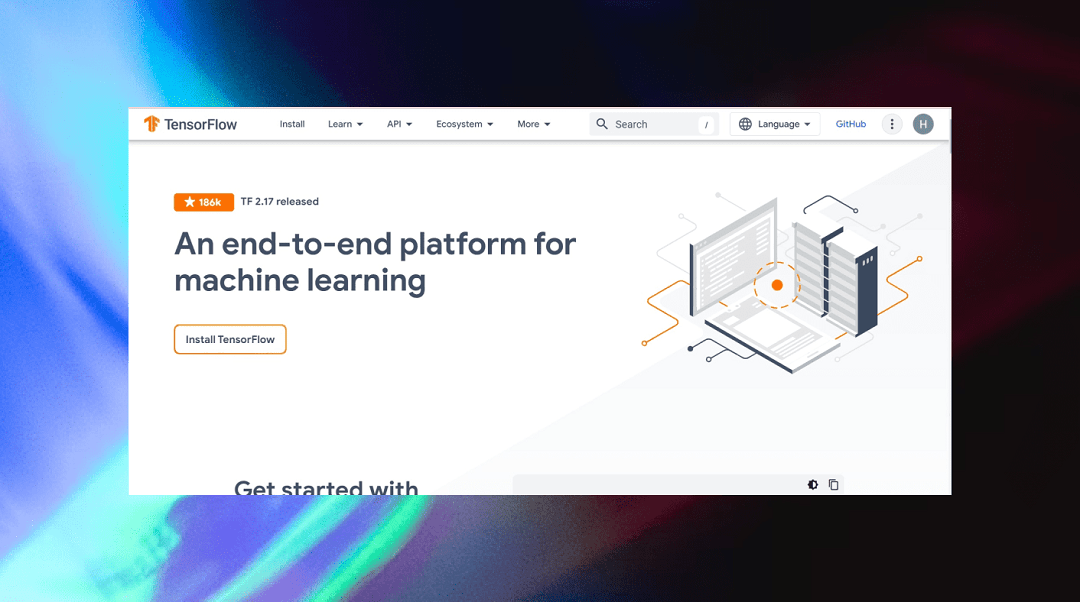
TensorFlow is a popular open-source platform for building and deploying machine learning models at scale. Its versatile framework supports deep learning and neural networks, making it ideal for complex AI applications. TensorFlow is making machine learning more approachable for researchers and developers, by enabling efficient prototyping, easy deployment, and hands-on learning.
Key Features
- Compatible with common programming languages like Python, Swift, and JavaScript.
- Integrates seamlessly with other Google services for enhanced functionality.
- Optimized for both CPUs and GPUs, ensuring efficient neural network training.
- Large community contributing to extensive resources and regular improvements.
Pricing
- Free
User Ratings
User Review
Scott W. D., Deep Learning and Data Scientist, Computer Software
This Library is very flexible for doing Matrices and Tensor So building very deep high-level quick and scalable ready-to-use neural networks is at your fingertips. However, the depreciation of the code is frustrating. To use one form just to throw an Error message.
Best Open-Source AI Platform No.2: PyTorch
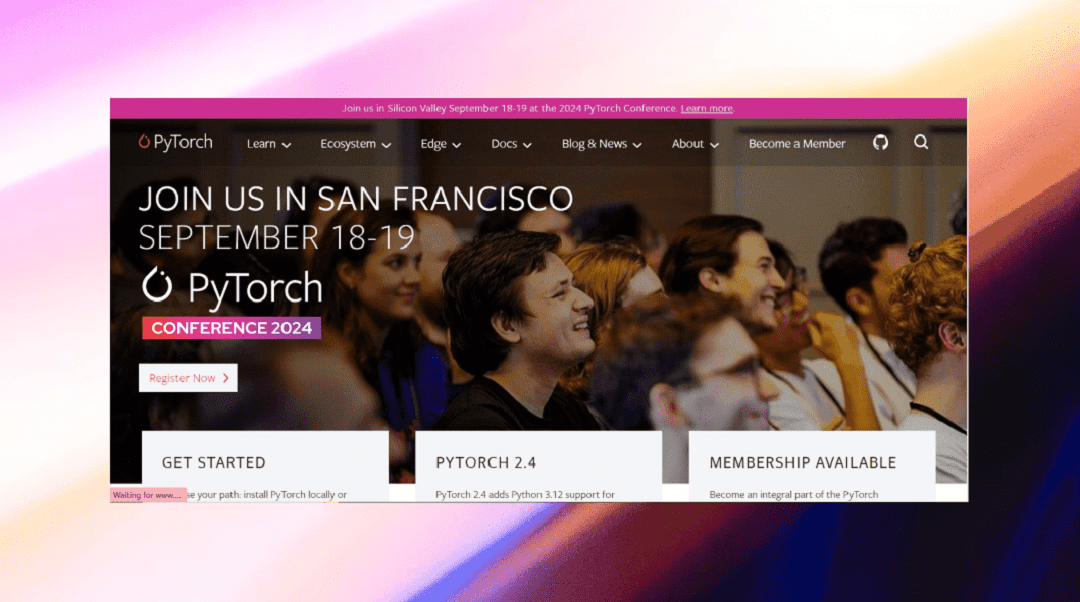
Similar to TensorFlow, PyTorch is a one-stop platform to help you transform your ideas from raw imagination to visual websites and applications. It is an open-source machine-learning library that mainly emphasizes flexibility and speed, making it popular among researchers and developers.
Key Features
- Enables changes to be made on the fly, facilitating easy debugging.
- Includes libraries for computer vision (TorchVision) and NLP (TorchText), enhancing its capabilities.
- Accessible for developers familiar with Python and C++ interfaces.
Pricing
- Free
User Rating
User Review
Avanish G., Software Engineer, Small-Business
You can use it not only with Python but also with C++. It indicates that we can implement ML, DL, and AI tools in the future in faster compiling languages like C++, Java, and C#, Nonetheless, it does not work well when you have to train a very small amount of data.
Best Open-Source AI Platform No.3: Rasa
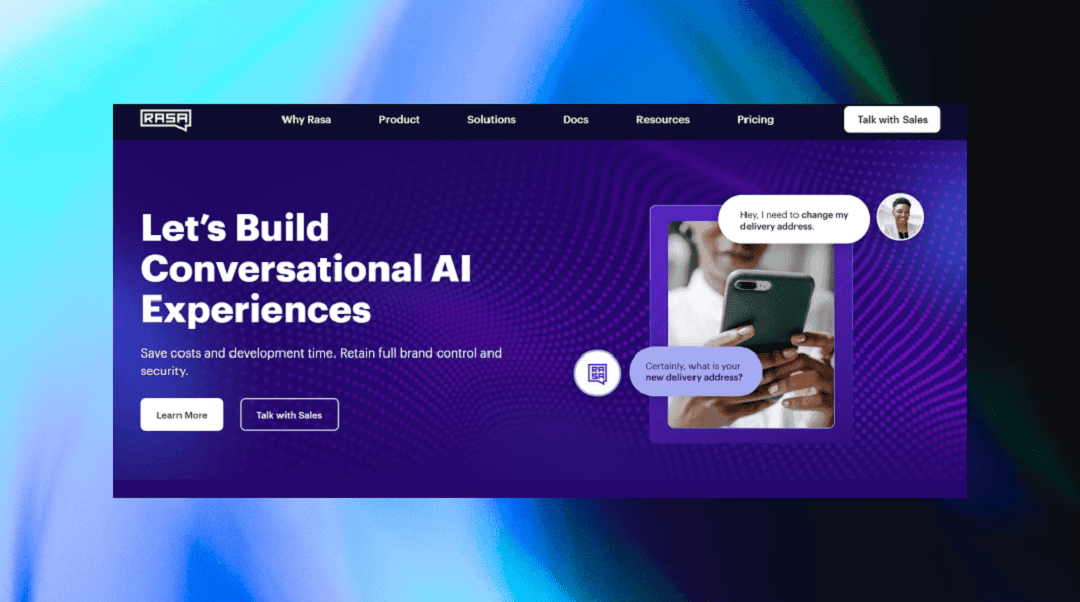
Rasa is another open-source framework for building conversational AI and virtual assistants. It enables developers to create customizable conversational agents using machine learning.
This technology facilitates understanding and designing natural language replies. Online businesses and websites can greatly benefit from this tool for communicating with their customers through interactive chatbots.
Key Features
- Provides tools for managing conversation flow, enabling complex interactions.
- Easily integrates with messaging platforms like Slack, Facebook, and more.
- Fully open-source, allowing for extensive customization and community contributions.
- Built-in testing tools to ensure conversation quality and performance.
Pricing
- Free plan.
- Growth and enterprise plans (contact sales).
User Rating
User Review
Beebek A., Lecturer, E-Learning
Its intent classification models are very accurate and named entity recognition models are also highly accurate. However, integrating rasa chatbots with other communication channels documentation should be improved.
Best Open-Source AI Platform No.4: Meta Llama 3
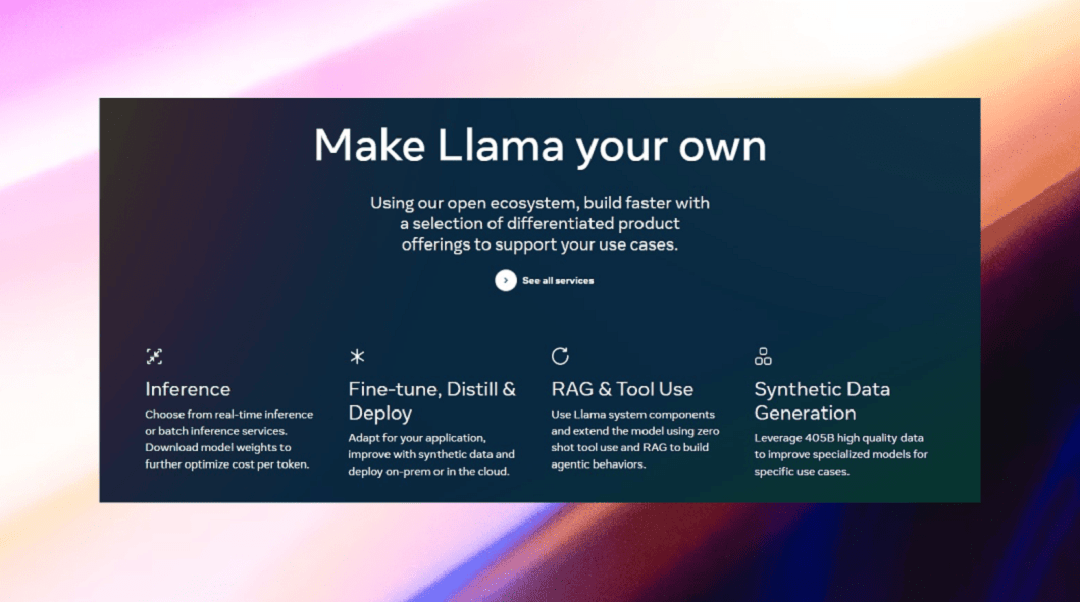
Meta Llama 3 is a large language model launched as an open-source tool. Compared to its predecessor Llama 2, this version has better reasoning abilities and code generation potential.
Plus, it can better follow the human instruction that works best for researchers, developers, and businesses that require scalable NLP solutions.
Key Features
- Data processing in over 30 languages, including Hindi, English, German, Thai, French, Spanish, Portuguese, and Italian.
- Instructions pass through PPO (Proximal Policy Optimization) and DPO (Direct Preference Optimization) for improved reasoning and coding responses.
- Delivers top-tier performance for text generation, summarization, and translation tasks.
- Optimized for efficient scaling, from local systems to large cloud infrastructures.
- Uses several data-filtering pipelines to train data for effective data analysis and prediction.
Pricing
- Free
- 8B, $0.22 input/ output (AWS)
- 70B, $0.99 input/ output (AWS)
- 405B, $5.32 input/ $16 output (AWS)
User Rating
- G2: 4.3/5
User Review
Praveen A., Consultant, Small-Business
Meta Llama 3 is fantastic at understanding and responding to natural language, making conversations feel smooth and natural. Meta Llama 3 can be quite complex and might be hard for beginners to use without a lot of training or good documentation.
Best Open-Source AI Platform No.5: Keras
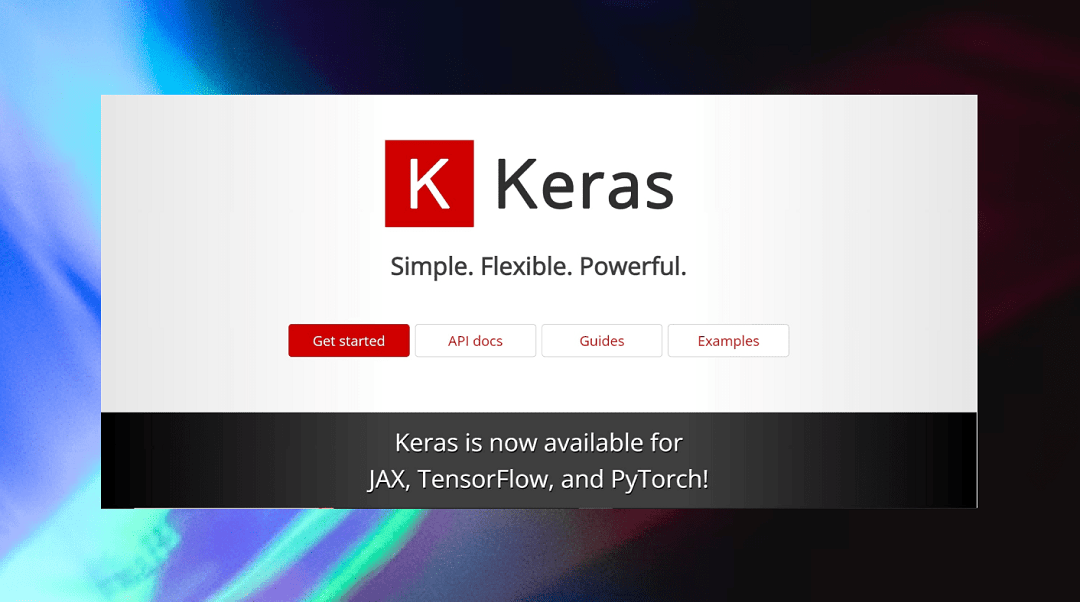
Keras is an open-source neural network library written in Python. It provides a simple interface for building deep-learning models. Users can build prototypes and iterate on their designs with minimal code.
This facilitates rapid experimentation in various machine-learning tasks. Hence, it works best for AI researchers, data scientists, and software developers.
Key Features
- User-friendly API simplifies the process of creating complex neural networks with clear and concise code.
- Modular and extensible components can be easily assembled and customized, allowing for rapid prototyping.
- Seamlessly integrates with TensorFlow, providing advanced features when needed.
Pricing
- Free
User Rating
User Review
Waleed E., Assistant Lecturer in Mechatronics Department, Education Management
Keras is the only platform that runs on top of the most popular backends like TensorFlow and PyTorch. This gives great flexibility to researchers to try their network architecture across multiple libraries mentioned. However, if you encounter an error, it is hard to be debugged.
A new and helpful AI Platform: Edraw.AI
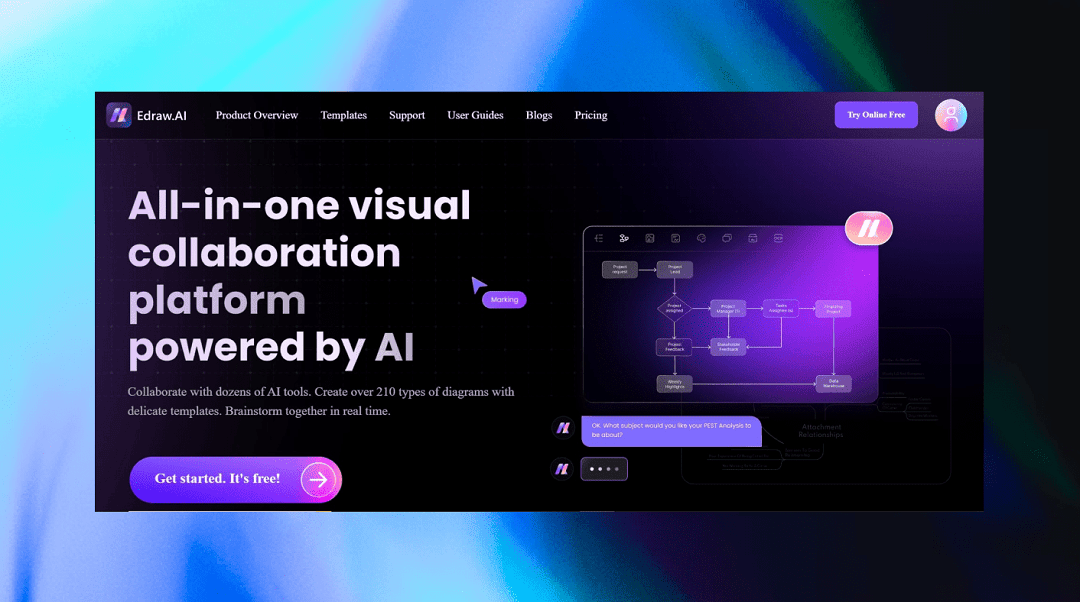
Open-source platforms are publicly available for editing and modification, which means potential attackers get a chance to exploit their weaknesses. Moreover, these tools are not optimized for big datasets, leading to performance limitations and unnecessary glitches. To resolve these issues, switching to a free, non-open-source platform like Edraw.AI might work better.
Edraw.AI is an intelligent diagramming solution that uses advanced algorithms to create diagrams, analyze documents, perform writing tasks, and conduct research. It is also safer and keeps your confidentiality intact with a built-in encryption function. Plus, you can get started on this tool for free, too, without managing the code.
Key Features
- Users can use encryption to protect their work from unauthorized access.
- A wide range of ready-to-customize templates for quick diagram creation.
- AI tools like OCR, file analysis, and diagram generator for extracting key insights from content.
- An integrated chatbot to streamline diagramming with intelligent automation. Gives suggestions to improve and write topic-oriented content.
- A shared team space with real-time capabilities.
Pricing
- Free plan
- Pro Plan: $6.58 per month
- Unlimited Plan: $8.25 per month
Final Words
In summary, each open-source AI platform has unique strengths, catering to different AI development needs and use cases. Hence, to select one, you must be clear about your needs, whether you prioritize scalability, research flexibility, or specific applications like conversational AI or data analytics.
Of all the above tools, Edraw.AI stands out for its intuitive platform that combines AI with visual productivity. If that’s what you're looking for, try its free version.

